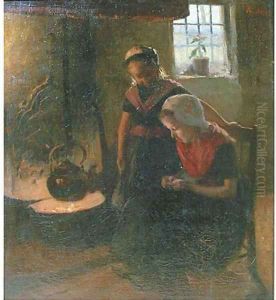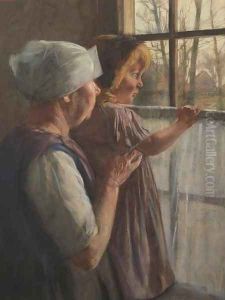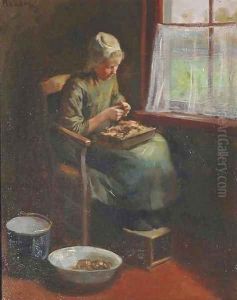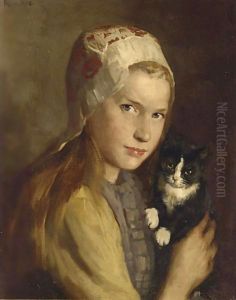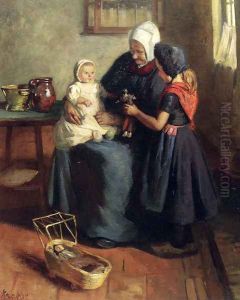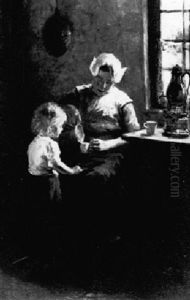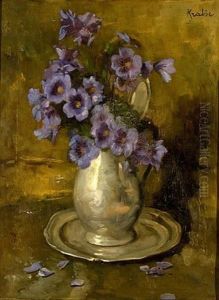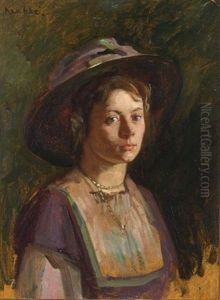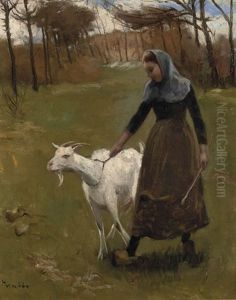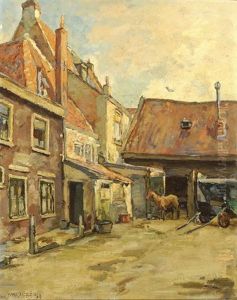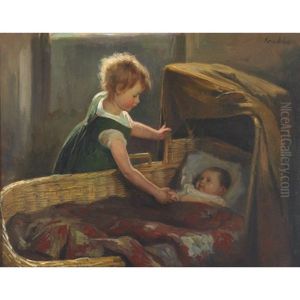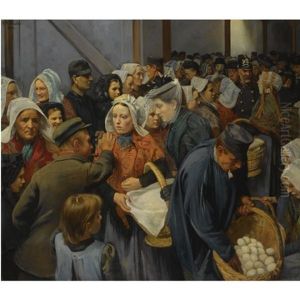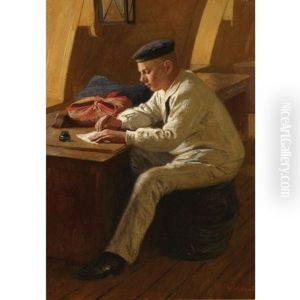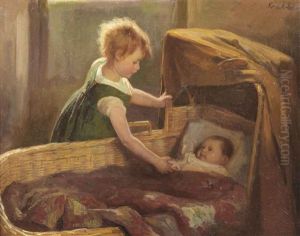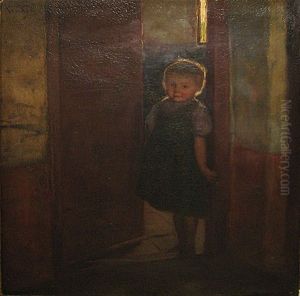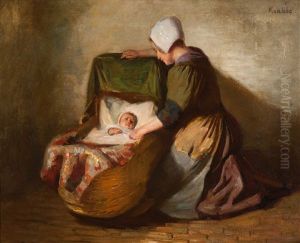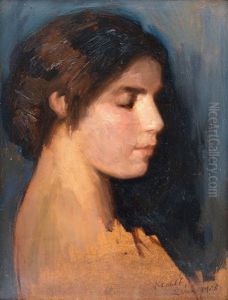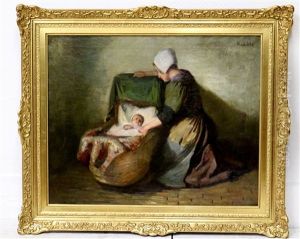Hendrik Maarten Krabbe Paintings
Hendrik Maarten Krabbé, born in 1868 in London, was a distinguished Dutch painter known for his contributions to the art scene in the Netherlands and beyond. Despite being born in the United Kingdom, Krabbé's Dutch heritage played a significant role in his upbringing and artistic development, as his family returned to the Netherlands when he was still young. This blend of British birth and Dutch upbringing would later influence his artistic style, which combined elements of both cultures.
Krabbe demonstrated an early passion for art, leading him to pursue formal education in the field. He studied at the Rijksakademie van beeldende kunsten (State Academy of Fine Arts) in Amsterdam, where he honed his skills and developed a distinctive style characterized by his use of color and light. His works often depicted scenes from everyday life, landscapes, and portraits, showcasing his ability to capture the essence of his subjects with both realism and sensitivity.
Throughout his career, Krabbé became known for his ability to blend traditional techniques with his own unique perspectives, making him a prominent figure in the Dutch art scene of the late 19th and early 20th centuries. His paintings were well-received, and he participated in numerous exhibitions both in the Netherlands and internationally, earning recognition and accolades for his contributions to art.
Krabbe's legacy extends beyond his own works; he was also a significant figure in the development of Dutch art education, contributing to the training and mentorship of the next generation of artists. His influence is evident in the works of his students and in the continued appreciation of his art today.
Hendrik Maarten Krabbé passed away in 1931, but his contributions to the world of art continue to be celebrated. His paintings remain highly valued by collectors and art lovers, and his impact on Dutch art history is remembered and honored. Krabbé's work is a testament to the enduring power of art to capture the beauty of the world around us and to connect cultures through the universal language of creativity.
